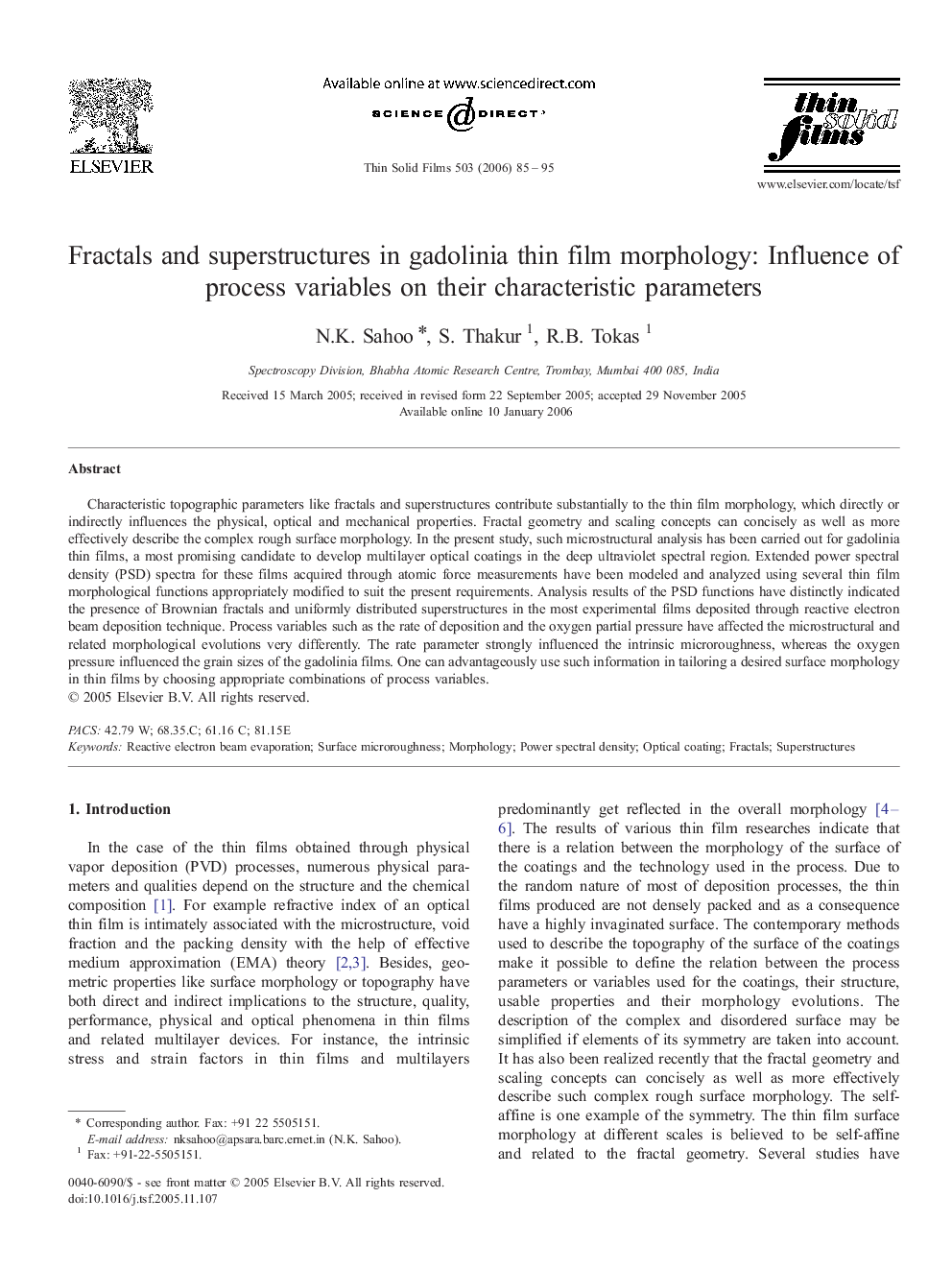| Article ID | Journal | Published Year | Pages | File Type |
|---|---|---|---|---|
| 1677061 | Thin Solid Films | 2006 | 11 Pages |
Characteristic topographic parameters like fractals and superstructures contribute substantially to the thin film morphology, which directly or indirectly influences the physical, optical and mechanical properties. Fractal geometry and scaling concepts can concisely as well as more effectively describe the complex rough surface morphology. In the present study, such microstructural analysis has been carried out for gadolinia thin films, a most promising candidate to develop multilayer optical coatings in the deep ultraviolet spectral region. Extended power spectral density (PSD) spectra for these films acquired through atomic force measurements have been modeled and analyzed using several thin film morphological functions appropriately modified to suit the present requirements. Analysis results of the PSD functions have distinctly indicated the presence of Brownian fractals and uniformly distributed superstructures in the most experimental films deposited through reactive electron beam deposition technique. Process variables such as the rate of deposition and the oxygen partial pressure have affected the microstructural and related morphological evolutions very differently. The rate parameter strongly influenced the intrinsic microroughness, whereas the oxygen pressure influenced the grain sizes of the gadolinia films. One can advantageously use such information in tailoring a desired surface morphology in thin films by choosing appropriate combinations of process variables.
